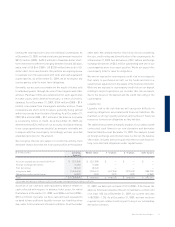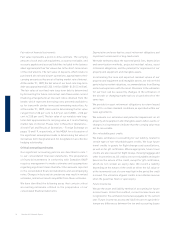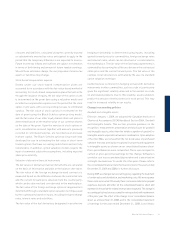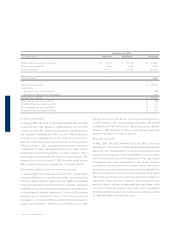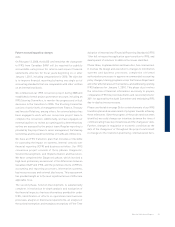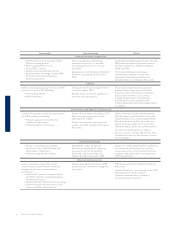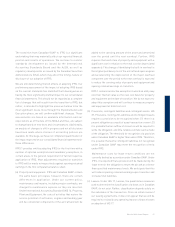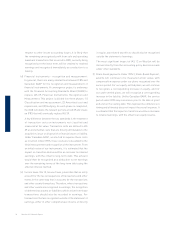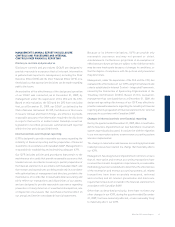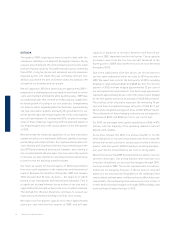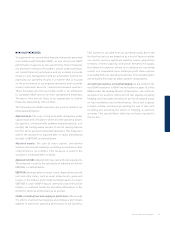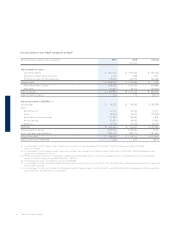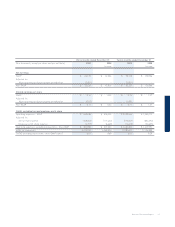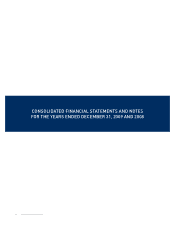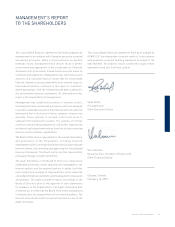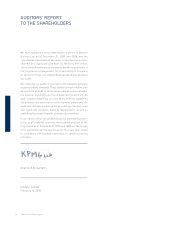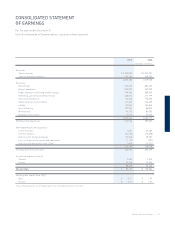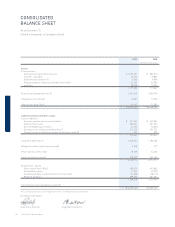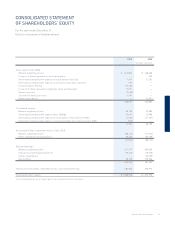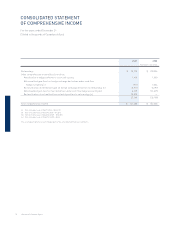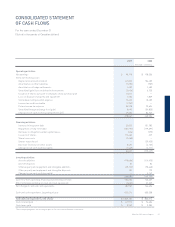Westjet 2009 Annual Report Download - page 71
Download and view the complete annual report
Please find page 71 of the 2009 Westjet annual report below. You can navigate through the pages in the report by either clicking on the pages listed below, or by using the keyword search tool below to find specific information within the annual report.
WestJet 2009 Annual Report 41
Fuel expense is excluded from our operating results due to the
fact that fuel prices are impacted by a host of factors outside
our control, such as signifi cant weather events, geopolitical
tensions, refinery capacity, and global demand and supply.
Excluding this expense allows us to analyze our operating
results on a comparable basis. Employee profi t share expense
is excluded from our operating results due to its variable nature
and excluding this expense allows greater comparability.
Aircraft fuel expense, excluding hedging: As presented in the
non-GAAP measures to GAAP reconciliation on page 16 of this
MD&A under the heading Results of Operations – Aircraft Fuel,
we believe it is useful to refl ect aircraft fuel expense excluding
hedging, which excludes the effective portion of realized losses
on fuel derivatives and ineffectiveness. Since fuel expense
is highly volatile, we believe presenting the cost of fuel, both
including and excluding the effects of hedging, is useful to
a reader. This reconciliation table has not been repeated in
this section.
NON-GAAP MEASURES
To supplement our consolidated fi nancial statements presented
in accordance with Canadian GAAP, we use various non-GAAP
performance measures as discussed below. These measures
are provided to enhance the reader’s overall understanding of
our current fi nancial performance and are included to provide
investors and management with an alternative method for
assessing our operating results in a manner that is focused
on the performance of our ongoing operations and to provide
a more consistent basis for comparison between quarters.
These measures are not in accordance with, or an alternative
to, Canadian GAAP and do not have standardized meanings.
Therefore, they are not likely to be comparable to similar
measures presented by other entities.
The following non-GAAP measures are used to monitor our
fi nancial performance:
Adjusted debt: The sum of long-term debt, obligations under
capital lease and off-balance-sheet aircraft operating leases.
Our practice, consistent with common industry practice, is to
multiply the trailing twelve months of aircraft leasing expense
by 7.5 to derive a present value debt equivalent. This measure is
used in the calculation of adjusted debt-to-equity and adjusted
net debt to EBITDAR, as defi ned below.
Adjusted equity: The sum of share capital, contributed
surplus and retained earnings, excluding accumulated other
comprehensive loss (AOCL). This measure is used in the
calculation of adjusted debt-to-equity.
Adjusted net debt: Adjusted debt less cash and cash equivalents.
This measure is used in the calculation of adjusted net debt to
EBITDAR, as defi ned below.
EBITDAR: Earnings before interest, taxes, depreciation, aircraft
rent and other items, such as asset impairments, gains and
losses on derivatives and foreign exchange gains or losses.
EBITDAR is a non-GAAP measure commonly used in the airline
industry to evaluate results by excluding differences in the
method in which an airline fi nances its aircraft.
CASM, excluding fuel and employee profi t share: We exclude
the effects of aircraft fuel expense and employee profi t share
expense to assess the operating performance of our business.


